Whether you’re a freelance graphic designer or an aspiring entrepreneur building the next unicorn, you probably scramble to find enough time to finish all the work that needs to be done. Time management for creatives can be especially tough for several reasons.
For one, you might suffer from the planning fallacy, a cognitive bias that makes us underestimate how long a certain project or task will take. You might be doing it out of optimism, yet trying to cram too many things into your freelance schedule can do more harm than good.
Another mistake is failing to prioritize the work. This can lead you to drown in a sea of unfinished tasks you refuse to delegate because you want them done “perfectly.” Alternatively, you maybe have to juggle countless and rather pointless meetings a day.
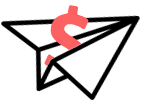
Get Weekly Freelance Gigs via Email
Enter your freelancing address and we'll send you a FREE curated list of freelance jobs in your top category every week.
And without proper time management, it can be difficult to find the time for other activities, such as spending quality time with loved ones, picking up a hobby or sport, or just working on your social life.
Regardless of the reason, you need to manage your time efficiently if you want to get everything done and still have time for yourself and your loved ones.
Time management tools for creatives
There are five types of tools that can improve time management for creatives. Some tools perform more than one function, but these are the five functions you want to look for:
1. Time-management tools
2. Automations tools
3. Finance tools
4. Project management tools
5. Communication tools
Let’s look at each category individually.
1. Tools to manage your time
An old business adage goes, “if you can’t measure it, you can’t manage it.” The following tools allow you to monitor your time, organize your schedule, and arrange for frequent breaks while working.
Bonsai
Bonsai includes specifically for online contract work and invoicing clients. It allows you to manage your hours with ease with an all-in-one time tracker, timesheets, and billing system. Everything you track is instantly billable, you can segment your logs by projects, and it comes with great reporting and even mobile apps.
Timely
Timely enables you to track your time as well as schedule your day. You can either go for a free account or opt for a more premium experience. Timely is also compatible with iOS devices, and you can use it via your Apple Watch.
Google Calendar
This is one of the many tools provided by Google. Google Calendar enables you to plan weeks or months ahead while reminding you of appointments. It’s free and accessible from any device so long as it is connected to the internet. To make it even better, you can sync it with a service scheduling software or a WordPress booking plugin, if you have a WP-based website. In this way, if you want to handle your client-time better, they can pick a free spot in your schedule without back and forth emailing or calling you.

Rescue Time
Another time tracker, Rescue Time, helps you track your time and highlights areas where there is room for improvement. The app claims that it can save you around four hours a week.
Toggl
The last time tracker on our list, Toggl, offers different plans, ranging from free to $40 per month.
Pomodoro technique
Simply put, the Pomodoro technique is a methodology of giving yourself breaks while working to conserve your energy. It was developed by Francesco Cirillo, and it works by breaking down your work into chunks.
Each chunk consists of 25 minutes of work. Between each chunk, you should take a five-minute break. After every four chunks, you can take a 20-minute break before you repeat the whole thing.

The idea is that these breaks are pivotal to keeping your mind fresh, a necessity to anyone who works in the creative field.
Flowtime technique
The Flowtime technique is a new and improved version of the Pomodoro technique. Rather than worrying about using strict timers, you can enjoy a better flow with the Flowtime technique.
2. Tools to automate your work
Now that you have tools to track your time, it’s time to find different tools that can actually save you time.
There are plenty of mundane tasks you have to perform day-in-day-out. These tasks require no brain power whatsoever, yet you have to do them for the good of the business. As simple as they may seem, they drain your time.
Fortunately, several tools can help you automate these tasks, take a load off your shoulders, and free up your time for the more important stuff.

Zapier
Zapier is one of the most famous names in the automation space. It connects different applications and automates the workflow.
The automation itself can be as simple as generating an instant reply whenever you receive an email or as complicated as a specific workflow that involves a few conditional statements.
IFTTT
IFTTT is an acronym for “If This Then That” similar to Zapier. It enables you to connect disparate applications and embed them into your website, mobile application, or even email.
If you frequently find your creative projects on hold due to clients who just don’t seem to respond, then you should try Content Snare—software that helps collect content and remind forgetful clients to keep the project moving ahead.
3. Tools to manage your finances
Managing your finances can be a time-consuming hassle. Nevertheless, it is also an essential task as it gives you a clear indication of the health of your business and becomes all the more necessary when the taxman comes knocking on your door.
There are several different types of financial tools on the market. Some tools help with the accounting process, others are critical for managing your payroll, while others come in handy for balancing your budget.
Rather than looking at individual tools, let’s look at some categories that might serve you best.
Accounting tools
You want a flexible tool that enables invoicing, tracking expenses, automating your billing and recurring payments, and creating quotes and estimates. You should also look for something that can help prepare for tax season and integrate with other applications.
Not too long ago, QuickBooks was the market leader when it came to accounting software. But, a few QuickBooks alternatives, such as Bonsai, FreshBooks, and Xero, are great options for freelancers.
Financial Dashboard
You always want to keep your eyes on the ball. When it comes to your business, that means consistently monitoring the financial health of your business.
One way to achieve this would be to create a dashboard that offers you a snapshot of how your business is doing and presents you with KPIs that let you know whether you’re on track. A few options that can help with this are Honeybook, LivePlan and InDinero.
Cash flow analysis
Alternatively, you might be looking for software that can help you track and analyze your cash flow. One such solution is Float.
4. Tools to manage your projects
There are countless project management tools on the market to aid in time management for creatives. They range from simple applications to write down lists to more advanced applications that allow you to plan several projects, track them simultaneously, and invoice the clients.
Several of the following tools are especially useful if you work as part of a team because they will facilitate collaboration.
Remember the Milk
Remember the Milk helps you create and manage a to-do list. It enables you to add and remove tasks, prioritize them as you see fit, and check off completed tasks.
Trello
Trello is perfect for remote teams. You can think of it as a virtual pinboard where everyone in the team will see any note or list you pin. The rest of the team will also be able to edit and collaborate on these lists and notes.
Basecamp
Another big name in project management software to help time management for creatives, Basecamp, is perfect for remote workers.
It allows collaboration through different parts of a project by splitting up the work into discrete tasks and ensuring that each task contains all the material related to the job. This material encompasses the individuals involved, discussions, documents, files, and any other necessary information.
Monday
Monday is an award-winning tool for planning, tracking, and collaborating on projects with your team. It also comes with customizable templates that make managing your project a cinch.
Monday comes with features such as tracking expenses, tracking recruitments for HR, planning blogs, analyzing the competition, and much more.
Asana
Asana is another visual tool that simplifies collaborative work and task management. You can create project plans that show you how every step is progressing and how much work remains to be done.
Asana also contains automation tools that enhance the workflow and that reduce errors.
5. Tools to facilitate communication
For creatives, communication can make or break a project. Communication is at the heart of understanding what the client wants and ensuring that the final result aligns with the client’s expectations.
Communication can be a hassle without the right tool for the job. It can waste precious time or leave you even more confused, which defeats the purpose.
With this in mind, here are a few tools that can help you:
Skype
Skype is one of the oldest and most known VoIP, voice over IP, systems out there. It’s easy to use and is backed by Microsoft, which never hurts. It also boasts plenty of useful features that can make communication much easier.
Slack
Compared to Skype, Slack is the new kid on the block. Nevertheless, it managed to capture a significant share of the market.
Slack YouTube video: https://youtu.be/EYqxQGmQkVw
Slack is the perfect app for team members to communicate with one another, and it integrates with other applications.
Boomerang
Keeping track of your emails can be time-consuming. Luckily, Boomerang can help with that. You can schedule when you want an email to be sent and when to send an automatic follow-up email. The app can also send you reminders if you choose.
Boomerang email scheduling: https://youtu.be/zIPm_mZ9dwg
Time management tips & strategies for creatives
Having covered some tools that help with time management for creatives, we should now look at tips and strategies that can help you stay as efficient as possible. After all, what good are tools if you end up wasting time through inefficient practices?
We can break down the tips into three main categories:
1. Tips for managing time
2. Tips for managing energy
3. Tips for managing focus
Let’s delve into each one.
1. Time-management tips
Since this entire article is about managing your time, it makes sense to start there.
Create a schedule
For many creative individuals, anything rigid or fixed is antithetical to their raison d’etre. Creativity is about thinking outside the box and bypassing the rigor imposed by stale thought. So, how can a creative be expected to abide by a rigid schedule?
Still, you need order in your life to do your best work. While your work itself should be original and inspiring, you need a certain level of consistency to get there. You will have a hard time being consistent if you aren’t abiding by a schedule.
Some of the most creative people on the planet are known for following strict schedules. You can ask Stephen King.
There is another reason you should set a schedule and follow it. Some creatives believe that you should devote as much time to the task as needed, without setting any time limits.
But this thinking can prove costly, wasting both time and productivity. It goes against Parkinson’s law, which states that “work expands so as to fill the time available for its completion.”
The bottom line is that restriction can be a good thing for creative people.
Keep track of your time
When you exercise, you use fitness trackers to monitor your progress. Similarly, you should monitor your time and track it carefully.
This helps with time management for creatives, but it also highlights time leaks you haven’t been aware of earlier. Once you’ve identified these leaks, you can automate or eliminate them.
To get started, try using a simple time-tracking app for creatives to measure where you’re spending your time.
2. Tips for managing energy
We all have a specific amount of energy we can expend throughout the day before exhaustion kicks in. We are also less productive when we are exhausted than when we are feeling fresh.
If you want to finish the work that used to take you four hours in only two, you need to manage your energy.
Find out when you do your best work
We are all different when it comes to productivity. Some of us are morning people, while others might be night owls, preferring the solace and peace while everyone else is asleep.
Whichever one you are, make sure to plan your day accordingly. Set most of the strenuous work during your peak hours when you are functioning at your best.
Take regular breaks
One way to avoid burnout is to schedule regular breaks to recharge. It’s not realistic to expect that you’ll finish a large project in one sitting. Break up your day into chunks and arrange for breaks in between these chunks. The Pomodoro technique can help you with that.
To keep your energy up, be sure to have regular snacks. It’s easy to lose yourself in work and forget to eat something. However, this can cause quick fatigue, and hunger might diminish your productivity and distract you. Keep a couple of snacks handy. Also, when creating your schedule, pencil in some time for a full meal.
Finish the worst tasks first
Some tasks are just boring. We all hate doing them, and we put them off until we are compelled to do them.
However, if you truly want to manage your energy, you should start your workday with these tasks. It might seem counter-intuitive, but there’s a good reason. The beginning of your workday is when you have the most energy, so you can work while ignoring outside distractions.
Secondly, when you finish these tasks, you will feel energized, propelling you to complete more work afterward.
The natural corollary to this tip is that you should save the best tasks for last. Even when you feel a little tired, your enjoyment of certain tasks will keep your productivity levels high.
Follow the “two-minute” rule
One problem that many creatives face is procrastination. We procrastinate with tasks we don’t like or because there are so many tasks we have yet to complete.
You can beat your lethargy by implementing the “two-minute” rule. The idea is simple: If something takes less than two minutes to do, you should perform it immediately.
As you finish several small tasks, you will feel a sense of accomplishment and motivation looking at what you have achieved.
3. Tips for managing focus
Your energy is how much work you can get done in an hour, but your focus is where you direct this energy. If you are unfocused and scatter this energy over several things, you might not get a lot done.
Conversely, if you focus your energy, you will be surprised at how much you can get done during the day. After all, a laser is nothing more than concentrated light, but it can cut through steel.
Ask plenty of questions at the beginning of any project
You need to know what your client’s expectations are at the outset. You can lose much time if you fumble around, unsure of where you’re heading, or if you end up delivering something that doesn’t meet with your client’s expectations.
To ensure you are on the right track, ask plenty of questions. Don’t think that asking too many questions makes you look unprofessional. Get a good client onboarding process in place to help with this.
Any client in the world would prefer a creative who asks many questions but gets the project right over someone who asks too few and misses the mark entirely.
Avoid distractions
One of the worst time leaks we all face is a constant stream of distractions. These distractions can come from anywhere: a phone call, responding to all of your emails, or checking social networks every five minutes.
These will all waste your time, kill your creativity, and break your concentration.
So, how do you deal with these distractions?
You should simply avoid them while working, but you should also schedule some time for non-work-related activities. You can set half an hour a day to respond to emails and only answer your phone during specific hours.
If someone calls you while you’re working, unless it’s an emergency, don’t answer but make sure to call them back later.
Remember that perfection is a false idol
There are two issues most creatives are notorious for.
First, many creatives are perfectionists, working and refining a project until they believe it’s immaculate. Second, some creatives get several inspired ideas while working and try to incorporate these ideas into the project.
However, this just wastes time, expands scope, and you never finish a project.
The remedy for perfection is pretty straight forward: Good and on-time is better than perfect but never. Rather than obsessing over every detail, strive to have a finished project that is good. Should you still have some time before the deadline, you can spend that time polishing your work.
Similarly, when feeling overwhelmed with ideas, you have to remind yourself that you are under a deadline and that you need to stay focused on the current scope. This is easier said than done, but anything else would be poor time management.
Don’t forget to enjoy the process
As a creative, your most valuable asset is your imagination. Yet, your imagination will be dull if you feel dull or bored.
Therefore, you can only produce your best work when you are enjoying the process. Proper time management for creatives is essential for maintaining focus and productivity. Of course, there will be some tasks you can’t wait to get rid of, but overall, you should enjoy the journey.
Keep the conversation going...
Over 10,000 of us are having daily conversations over in our free Facebook group and we'd love to see you there. Join us!


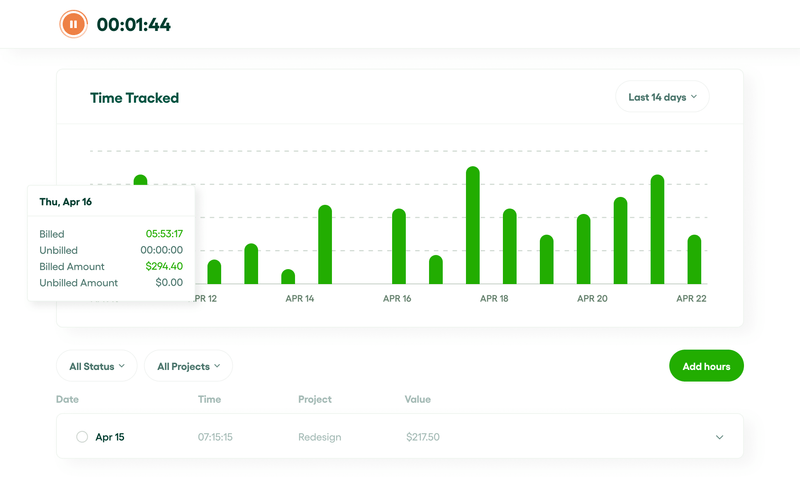
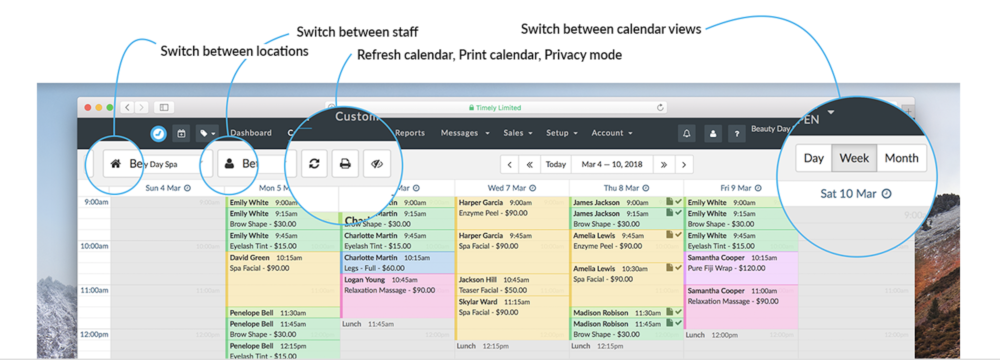







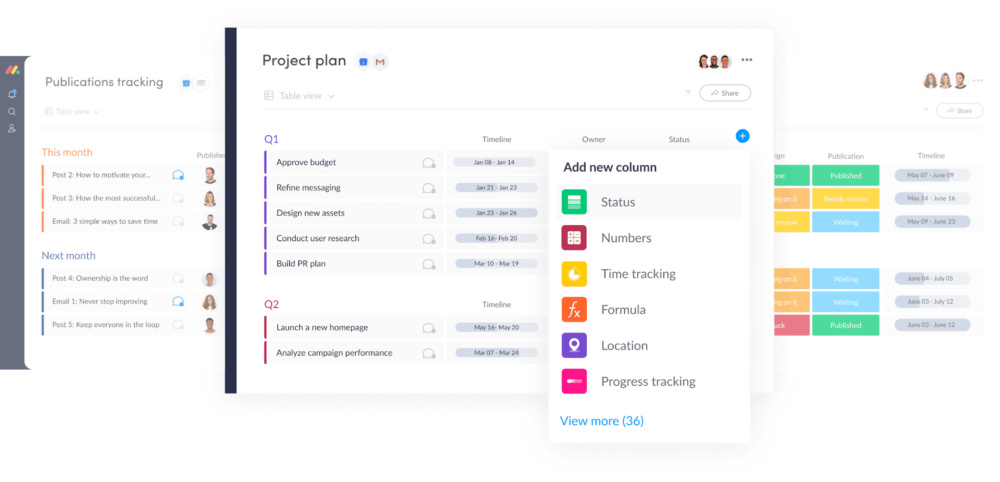


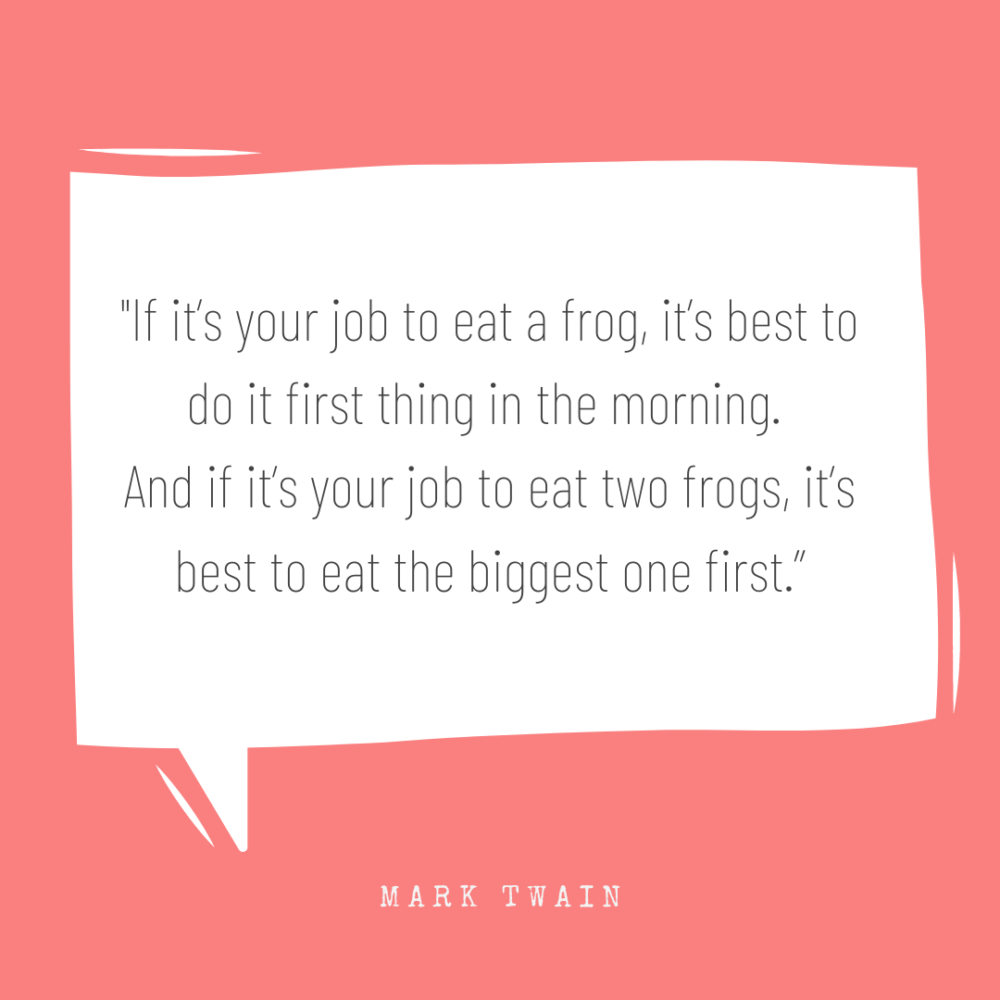
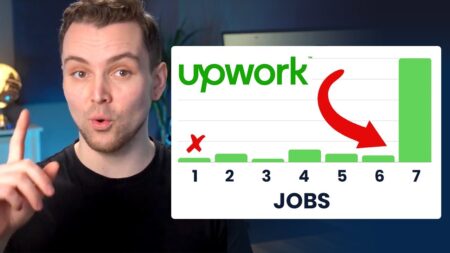

Nice Share!
In fact I practically followed all the tips! and they worked for me!
I totally agree with you on this point
“Force yourself to do the projects you hate first”
I follow this rule myself and find it really rewarding…
When you start fresh in morning, quickly work on things or projects which you don’t like. Yes its right. Work on things you hate first thing in the morning.. You are fresh and your hand & brain works faster. Now once the bad project is over… You look at the good once and you feel refreshed again.
Great article, I already do a lot of these things, i’m a productivity freak 😛 so I know for sure this is good advice to follow. The one lesson i’ll never learn though is doing the projects I hate first!
A very useful guide for designers and creative professionals. Over the years, I’ve often found that reading is a good time-filler during breaks as it does wonders in re-fuelling creative inspiration. We often subconsciously absorb new ideas through reading either about design or something completely un-related. Great read!